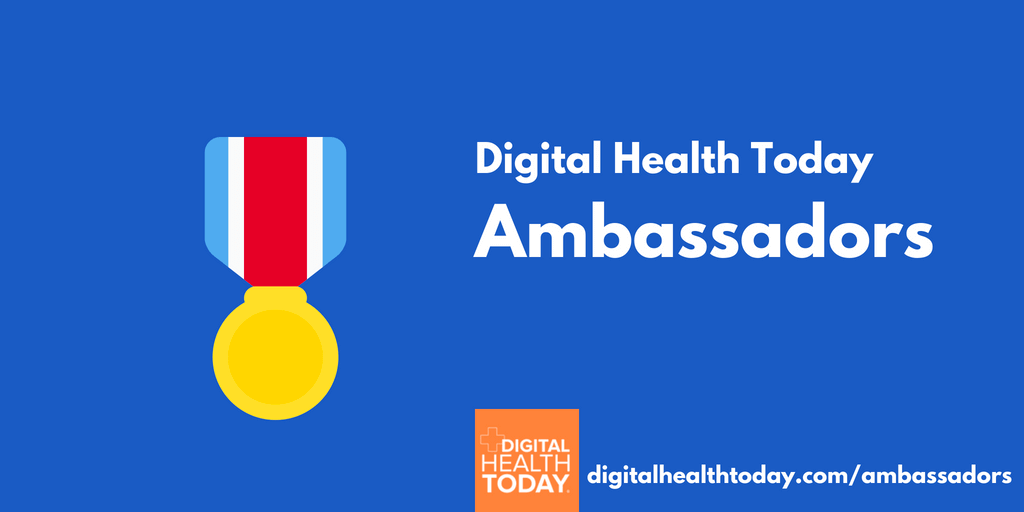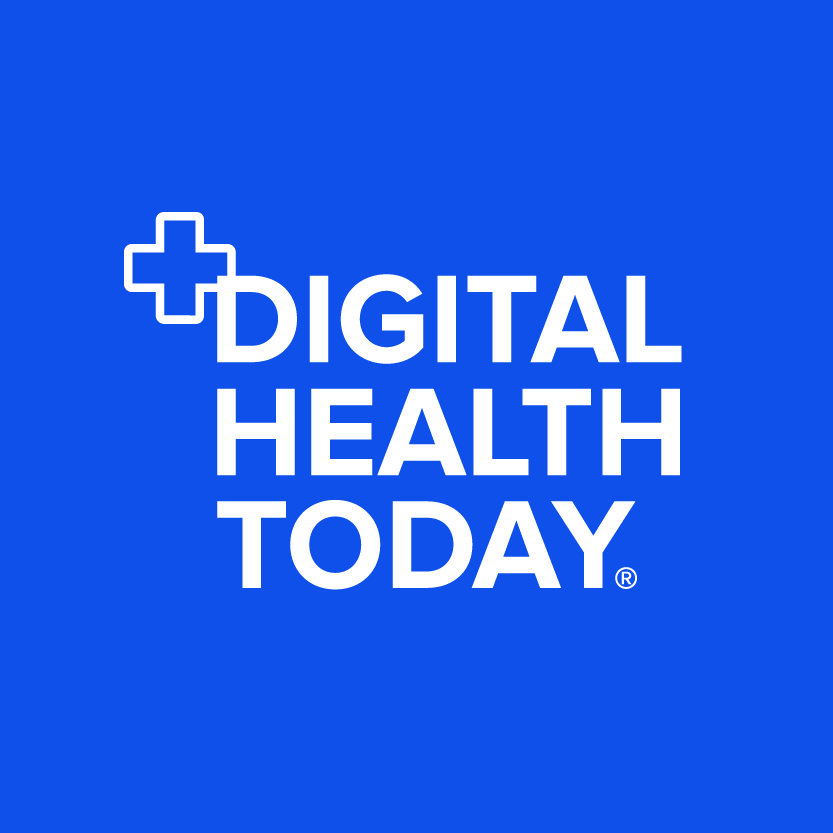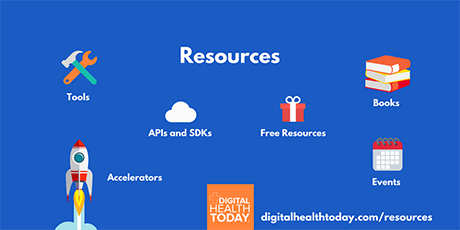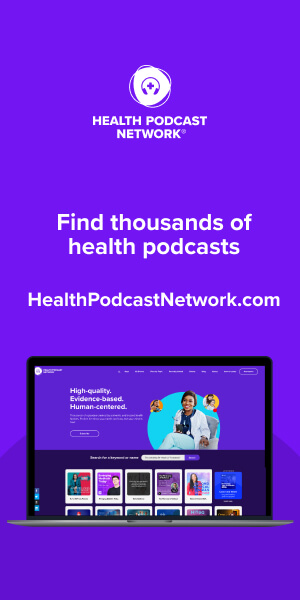Transcript
00:03 Tony Estrella
Welcome to Digital Health Today, Asia Pacific edition, your go-to podcast to learn about the transformation of healthcare in a region with over 4.5 billion people, across more than 40 countries. I’m your host, Tony Estrella. Today, I’d like to introduce Snehal Patel, a doctor, lawyer, investor, entrepreneur, and CEO of MyDoc. The diversity and depth of his background come together into a common mission, creating value-based digital health for better outcomes. In today’s episode, we’ll learn more about this mission and how MyDoc’s solutions, including telehealth, fit into a broader ecosystem of companies. So let’s get started. Snehal, welcome to the show.
00:44 Snehal Patel
Thank you for having me. Super psyched about it.
00:48 Tony Estrella
You’ve been immersed in many facets of healthcare. I introduced you with many titles and backgrounds. All of those have helped to hone your personal skill set, and you’ve also worked across multiple geographies. What led you to focus on healthcare, and basing yourself here in Singapore, and looking at Southeast Asia?
01:05 Snehal Patel
Well, Tony, it’s a great story. I started off my career in New York, where I was a medical student and realized that some way during my education that I really wanted to experience the world of healthcare above and beyond the four walls of the hospital. So I took a very circuitous route to my particular vantage point here in Singapore. I started off doing work as a transactional attorney, looking at healthcare from the perspective of biopharma and M&A transactions, and got a really good understanding of how innovators are building new businesses, looking at how companies are acquired. And that really jogged my imagination in terms of do I really want to be in a business where I can start to create value and move forward in interesting models. And I’ve always been fascinated by Asia because, as an ethnic Indian having grown up in the US, it’s a market that has always appealed to me, and there was a lot of buzz in terms of what’s going on in Asia. I had an interesting opportunity to move out here several years ago, to actually lead a healthcare investment team at a private equity fund, now known as the Clermont Group, the Chandler Corporation back then. It was interesting because I got to focus on a specific part of the healthcare value chain which I’ve always been intrigued about, which is really the initial contact point for patients. Primary care, there’s a lot of discussion around how primary care is the core to models such as the NHS in the UK, we debate it endlessly in the US. But in Asia, it’s really the first point of contact for most care providers. When I first came out here, what was really fascinating about it was we were witnessing the first boom of a huge cadre of the middle class rising out of poverty and moving into a socioeconomic strata where they had access to care for the first time. As we quickly realized, the things that most people care about, most families, as they are emerging in this middle class, are education for their children, so that they can continue to develop and continue to grow from a wealth perspective, but also making sure that they have enough in quality care, to ensure that they don’t slip back down into poverty. So I think that really galvanized my understanding of the market. I spent a lot of time in India initially, where I was able to see that transformation in front of me occurring. You’d see whole clinics and neighborhoods popping up. But then I realized that there was a lack of standardization and a lack of specific elements that would allow these little, small clinics to really prosper. And so that’s how I started to really understand the business of healthcare, having gone from being a clinician, being a deal person, into actually looking at the operating models of healthcare. And that was a nice segue into building up a business where we were in India, Indonesia, Vietnam, Philippines, again, focused very much on this primary care, as I say, the the front door to healthcare. At that time, and not digital front door, these are all brick and mortar clinics. But it really got me understanding how that model worked. I think the MyDoc origin story comes from there.
03:58 Tony Estrella
Before we jump into MyDoc, I started this episode off by saying your personal mission is around value-based healthcare. Can you define what you mean by that to our audience?
04:08 Snehal Patel
Yes, as a term of art, value-based healthcare has several different definitions, but the way I look at it is quite simple. It’s a mechanism where the delivery of healthcare is provided between patient and provider, but the risk of the care, in other words, the outcome of that care is allocated accordingly between provider and the ultimate payer. Right? So when we talk about payers, we discuss, there are governments that are payers, payers are people that will actually pay the care. In some markets, especially in more developing markets, the payer is the patient, so they actually pay out of pocket. But you also have insurance companies. I think typically, we think of insurance companies as a payer. So the way that value-based healthcare is really structured, and another way to think about it is how it compares to the current model which is fee-for-service. Value-based healthcare, we are all optimized to provide the best outcomes because providers that provide better outcomes get paid more, they retain more of the money that they’ve been paid. But equally speaking, it allows the payer to know that we are optimizing the system for better outcomes.
05:11 Tony Estrella
So it’s linking not just the fact that care has been provided or an intervention has happened, but that the outcome and the efficacy of that intervention actually led to something positive for the person that had to go through the medical care.
05:24 Snehal Patel
That’s right. The one key element there is that there is a realization that the risk of the outcome is not borne by just one party alone. So the providers in that particular network bear some risk, but they also bear the upside. If they’re able to provide great care consistently, then they are able to benefit financially from that as well. So it’s about having both parties having skin in the game, and that ultimately benefits patients in a way because it aligns incentives to really prioritize better care and better outcomes.
05:56 Tony Estrella
If I remember correctly, you’re a second generation doctor by training, right? Your father was a doctor. I imagine that some of that led you to then decide at some point you wanted to build this company to help achieve this type of outcome, and MyDoc is that company. Can you tell us a little bit more about what is MyDoc? What does it do? And how does your background as a clinician and all these other hats that you’ve worn come together into this business?
06:21 Snehal Patel
I think maybe I’ll pick up from the transition from my work at Chandler leading to the founding of MyDoc. The one thing that I realized, as we were building businesses across the region, as I mentioned, we were in markets as different as Indonesia, India, Vietnam, Philippines, was the commonality that surrounded this access to care issue. You can be markets that differ quite markedly in terms of socioeconomic levels, even culture. But the common strand was how do you get proper access to care. Primary care and that entire chain became a very critical element that was not really well developed. What started to really dawn on us, as we’re building these businesses, again, mostly in the brick and mortar space there was very little tech at the time. But the realization was that there had to be a way to, at the risk of using an analogy that’s been well trod so far, of making the copper wire to wireless transformation to occur. In terms of these widely disparate markets that have lots of gaps in infrastructure, the digital ability to create a digital gateway between patient and provider just started to become pretty obvious.
07:31 Snehal Patel
And so that’s where MyDoc started from, saying, “Look, how are we going to connect these millions and millions of consumers and patients into an effective care delivery platform, when they don’t even have basic infrastructure?” But then, on top of which, we started to quickly realize that all these markets also, unfortunately, bore another similar resemblance, which is at the time there was very little national insurance, there was actually very little third party insurance, and there still is. The penetration of insurance in this region is significantly lower than in the West, for example. Because of those factors, provider groups have always operated on, as you suspect, which is normal, a cash-for-service business or a fee-for-service model. But, as we have learned through looking at markets, like the United States and other countries that have gone down this path, those models end up having a tremendous amount of difficulty scaling in a way that’s cost-manageable, cost-sustainable, especially when you have these overarching issues around rapidly aging population, a rising amount of non-communicable disease burden. So all those together started to make this idea of a value-based care model make a lot more sense in any of the markets in Southeast Asia. And that’s why the transformation has occurred, and the mission became very clear. We need to basically bring this digital gateway between patient and provider, but we also have to create an economic model that’s going to help really prioritize quality care, and then bear that risk accordingly, so that we can start to really take fairly meager resources, and re-prioritize those resources to provide the best care possible. So that’s the way that we bridge the two sides of this coin.
09:10 Tony Estrella
Got it. So, Frost & Sullivan, for example, when they gave an award last year, it was for being the leading telehealth company in this part of the world. So telehealth fits into this because that’s that gateway, the technology gateway, but the ultimate vision is much broader than that.
09:25 Snehal Patel
That’s great, Tony. I think telemedicine and, more broadly, COVID, and I’m sure at this point all of your listeners and everyone else are tired of listening about COVID and COVID-related impacts, but, to be completely clear, it’s because of COVID that telemedicine has now been able to gain critical acceptance across the region. Often when I give talks I usually start any discussion around telemedicine with basically the front cover of a magazine that is long ago lapsed into history, called Radio News. The cover was from, I think, 1929 where the cover showed a painting, because it’s a painting at the time, of a doctor coming out of the radio, and it says, “The radio doctor will see you now.” And I use that as an interesting talking point when I start these discussions, because we always fall in love with technology, but we forget the real purposes of that technology. My analogy for bringing that up to what value-based care is, and how telemedicine plays into it, is, again, telemedicine is the screen door to healthcare, using a very well-known metaphor. It’s an absolute, critical part of being able to launch a proper, sustainable value-based system, because you need to have the data, you need to have the interconnectivity between the different provider networks, and all that’s going to happen through a digital gateway. But without that acceptance of people going through that door, you really can’t get the benefits of the rest of it. And so I think that’s why telemedicine is critical, but it is the metaphorical tip of the iceberg. We need that tip, for the iceberg to exist, but we can’t ignore that the greater transformation, the much greater impact, is going to come because consumers are going to be able to access the depth of all of that is there, that’s going to make this sustainable.
11:05 Tony Estrella
And the opportunity in Asia-Pacific seems to be massive, right? If you look at the size of the population in India and China, or if we look at within Southeast Asia and Indonesia, there was a WHO stat which stood out to me, which is that Indonesia has only four doctors and 12 hospital beds for every 10,000 people. That’s one country, one data point, but there’s just a massive disparity in terms of being able to get easy access for individuals. As you look at the business growth for MyDoc, you mentioned, tip of the iceberg for this being telemedicine. There’s a broader ecosystem that needs to be involved, to create true value-based healthcare, and you’re working with some of those partners. Can you tell us more about what is the ecosystem that is coming together with MyDoc? And how do those pieces fit in?
11:51 Snehal Patel
Absolutely. In order to have a proper system where risk is shared, where outcomes become really prioritized, in my mind, you need a bare minimum of at least two other ecosystem partners. On one hand, you need to have a third party payer, an insurance company or insurer, it could be the government, it could be a private third party payer, that is in the business of understanding risk, that is in the business of insuring risk. And those groups tend to be motivated and incentivized to look at models like this because, quite simply, it makes it pretty easy for them. If it works, it reduces our cost. So it allows them to offer more competitive products in the market, but it also allows them to manage that in an effective way.
12:33 Snehal Patel
The other group that’s obviously critical in a proper value-based model is the provider networks. This is where you need doctors, you need care provisions, and you actually also need the downstream care facility. So it’s not pure digital in the sense that people just use telemedicine. It’s about how you’re able to then hand off from an online ecosystem to an offline network provider for patients that need more complex levels of care. All of that has to be built and it all has to transition in a way that makes it seamless to the patient. Otherwise, you run the risk of actually not being able to achieve the overall goals that you set out to do. What we’ve been doing since our inception is working with all of these various ecosystem partners to understand who are the people that have the same orientation as us, to focus on being able to channel patients in a way that’s going to really redistribute the level of risk, and also the economic model. So for us, as an organization, as a business, we have to make money. We do so primarily through being able to provide the services we provide. But increasingly, the conversation is now shifting around, “How do we then reap the rewards if, for example, through our intervention and through our management, patients end up costing less to a payer?” That incentive structure becomes very critical in making these models scale.
13:49 Tony Estrella
I think you answered my next question, in a way, which is that, as a result of the connectivity you have to make between ecosystems, your expertise as a business has to rely on your clinical background as well. So it’s not just enough to be a technology organization helping to connect people. You need to be able to connect with the real deep parts of healthcare providers and payers, to make this whole system work. With that expertise that you’ve built, we’ve spoken in the past that, yes, you’re focused on Southeast Asia, but you also have global interactions and global opportunities for growth. Can you tell us a bit more about how that’s coming about?
14:26 Snehal Patel
For us, as an organization that’s focusing on the intersection between clinical care and technology, there are definitely very interesting conversations outside of the region, where we’re able to leverage our technology stack and provide solutions to customers more as a technology provider than as a full-stack service plus technology business. Those conversations have progressed pretty markedly. We’ve actually launched an initial model like this in the US market, for example, where there is a significant need for more and more partners to come on board, just given the size of the market, as well as the complexity of the issues that most Americans face. So that’s been very interesting for us and it’s giving us an understanding of how you take an organization like ours and repurpose it for that particular mission. But I also think that, ultimately, the way that value-based care is going to come along is the other part of it that we haven’t discussed, the other partner, which is the governments. I think even there you’re starting to see a lot of move. Even locally, here in Singapore, the Ministry of Health is becoming increasingly vocal about the need for a value-based approach toward healthcare. This is, again, being driven by very basic and common sense issues. We just have the budget published here. The reason why taxes are going up, number one, it actually was all over the copy, was because of healthcare costs. It’s interesting. It’s not because of COVID, it’s not because of COVID-level impacts, of course, on the broader economy, but the explanation for the reason why more revenue is needed for the government is because of healthcare costs. So I think that overarching logic and that need to basically tackle this issue is going to really drive adoption of these approaches. What I think is going to be interesting is to see how, with any level of disruption, as we’ve seen in other sectors, there are potentially winners and potentially losers. The good thing about healthcare is that it’s not a winner take all, there’s no reason why some person comes in, or a new company comes in, and destroys or takes out an incumbent. If the model works well, then, actually, what happens is the new technology providers or the new companies actually complement the ecosystem, and everyone wins because we’re able to be more efficient at specializing in what we do, and then handing over providers, patients to the next level where the next organization can manage that, based on their own expertise. So I’m hopeful that that’s the way that the transformation will take place.
16:50 Tony Estrella
Another way of saying that is that eventually there needs to be, from the individual perspective, seeking care, a closed loop that brings all of these solutions in a way that helps to solve their individual challenges. If we look forward to the next 2-3 years, what are some of the trends that you’re following, to help close that loop where MyDdoc fits in, has a tight connection with its ecosystem partners, perhaps even expand your product offerings to create that closed loop?
17:17 Snehal Patel
I think it’s really around, as you say, connectivity. I think there’s more and more opportunities on the technology side, for that connectivity to be out of the box, so it becomes easier to do the integrative care that people have known for a very long time is the right approach, but has not really existed. For example, we really pride ourselves on being innovative. We’ve had a couple of patents that we’ve had filed, that we just accepted, we just received acceptance last year, they were granted to us. And so we’re looking forward to taking some of that IP and actually helping use that to build out that connectivity. It’s all around the connectivity layer. So taking patients from a digital, online experience to an offline experience, and doing so in a way that really helps, again, put the patient first and foremost, and I think, maybe as a slight segue, or a slight tangent, one thing that I think we get lost in in every conversation on healthcare is how relevant any of these innovations are to the patient, and the level of patient care that’s necessary. I am personally overjoyed with the fact that, as painful as this pandemic has been, other than telemedicine, the other beneficiary, as a category in healthcare that has really, I think, become more at the top of people’s consciousness is mental health. So we now are looking at, particularly in a region like Asia where it’s typically been very stigmatized and folks don’t really talk about it, that mental health, the ability or the recognition that the way that patients or people perceive risk, threat, etc., and how that will then modify their behavior, is absolutely critical. It’s absolutely critical to making sure that any of these models we’re talking about, of care delivery, will succeed. I think that restructuring everyone to think about… Mental health is obviously a clinical category. But mental health, more broadly speaking, is really looking at patient well-being, and being able to use that as an organizing principle on how all these different pieces are connected together. I think that’s going to be the key thing, and that’s what we’re focused on. As a company, we need to know, if we structure the way that the patient is going to experience care in a certain way, is this going to help improve their mood to basically complete that transaction, i.e. go and see the provider they need to go see? If you have a patient-centric view, again, it’s a very big buzzword, patient centricity, but if you actually, really do believe that ethos, you’ll start to understand how a lot of these systems are going to line up, and what the logical implementation will be to take Person A from sick to well.
19:43 Tony Estrella
Adding a couple of buzzwords, or keywords, that people are talking about, where you have remote diagnostics with actual measurements that can be taken in a person’s home or in their hand, through their smartphone, on one end of the spectrum, before they have to receive interventions, or, on the other end, digital therapeutics where after diagnosis some intervention can take place, that may or may or may not necessarily be in the doctor’s office. Those fit into the broader ecosystem you’re describing. We’re coming up on time here. Snehal, thanks so much for your your thoughts and insight here. Really appreciate you sharing your views on value-based health-care. How can our audience reach you if they’re interested in learning more?
20:20 Snehal Patel
Please reach me at my email address, snehal dot patel [at] my-doc dot com. Happy to discuss this at anytime. Very passionate about it.
20:32 Tony Estrella
Great. We’ll put your LinkedIn and your email link as part of the show notes as well. Thanks again for joining us here.
20:38 Snehal Patel
Thank you, Tony.
20:40 Tony Estrella
And that’s a wrap on this episode. As I mentioned, Snehal’s email and LinkedIn are included in the show notes, along with other relevant ones for him and MyDoc. Before I go, here’s how you, our audience, can support us. Please share this podcast with others, and if you subscribe, you’ll get updates on new episodes and other content. Through my website, www.tonyestrella.com, you can learn more about my writing and links to reach me on LinkedIn, Twitter, and WeChat. And finally, please visit our website at digitalhealthtoday.com, to hear other episodes from our podcasting team. This show was researched and written by Taliossa, and produced along with Mission Based Media. The sound and music was by Ivan Juric, and until next time. I’m Tony Estrella, and thank you for listening.




